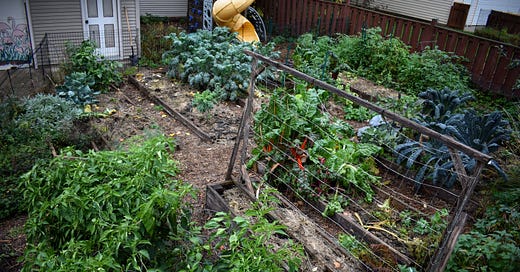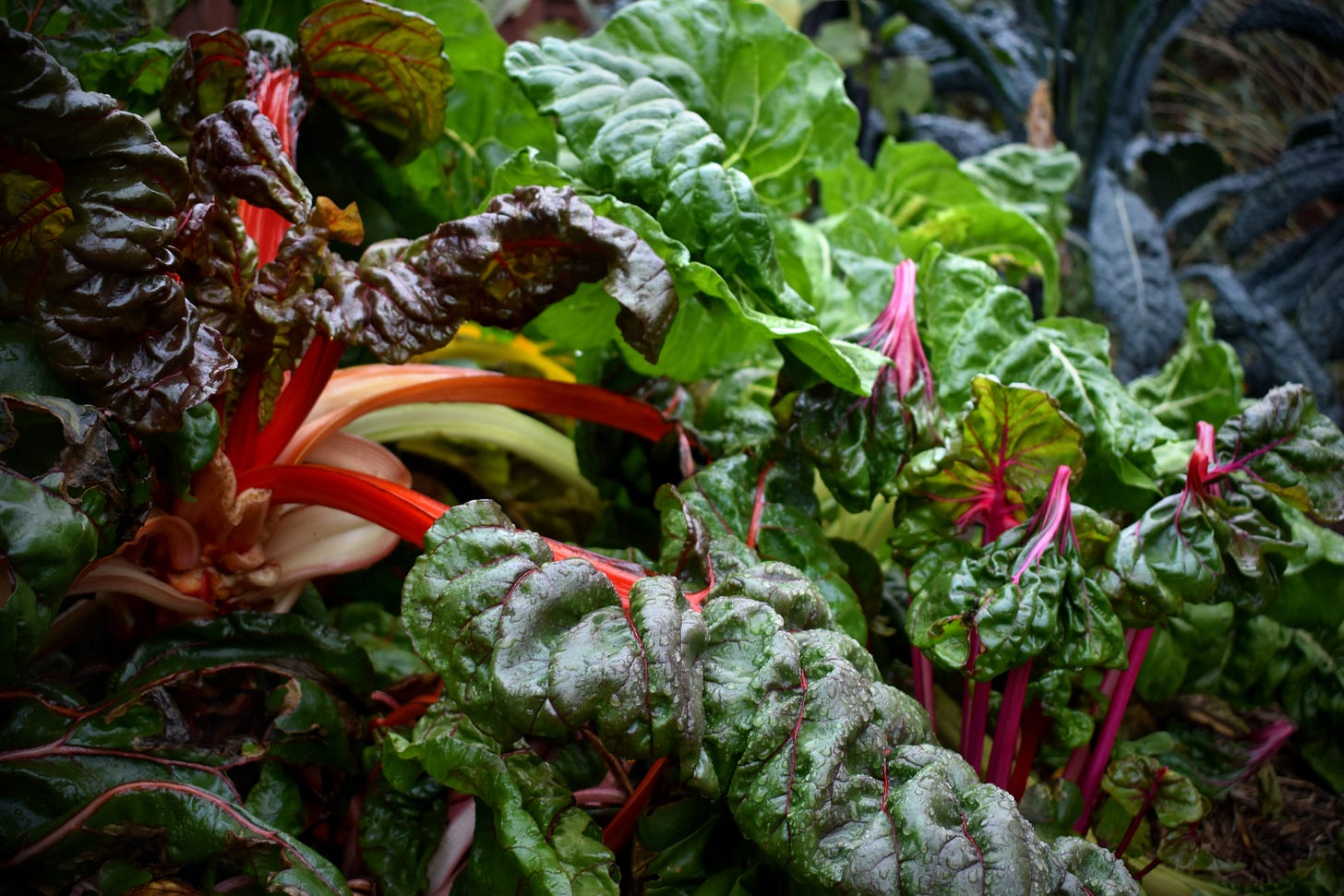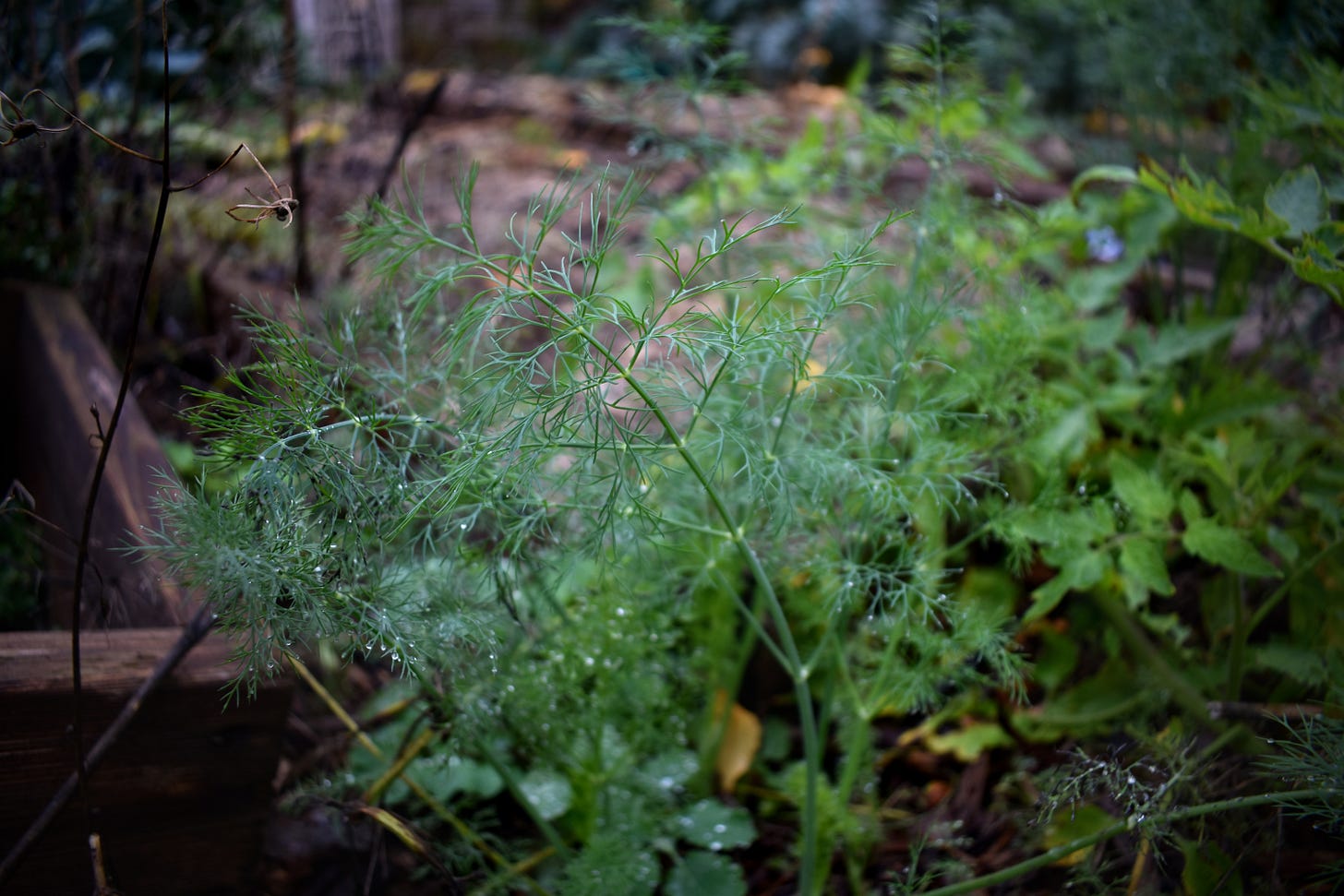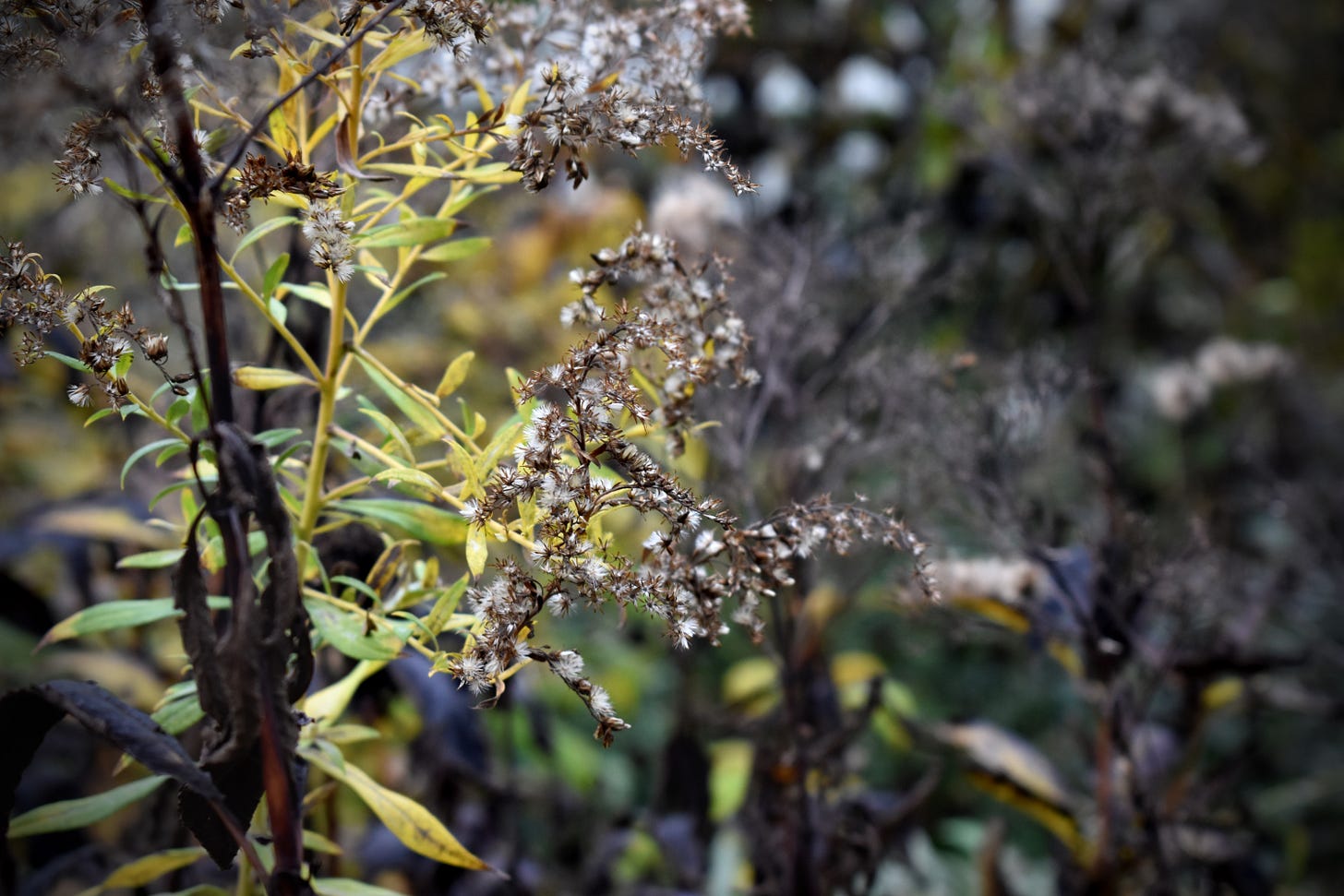My wife Sophie and I are homeowners for the first time, after moving into a house in south-central Madison earlier this fall. One of the dreams I've long associated with this life milestone is the chance to build a garden without the constraints that come from renting and moving every few years. I envisioned gradually transforming the yard of our new home into something that could provide a significant share of the produce we consume. After years of acquiring tools, building soil, assembling raised beds, and selecting seeds, I thought it might one day look something like this:
Well, it turns out the previous owners of our house had a similar idea, because that’s what it looked like on day one. That's the backyard, captured on a dewy morning in October just before the first fall frost. Just about every inch is planted, though. Tomatoes and herbs line the driveway, brassicas grow in a container on the front porch, and anything not planted with vegetables is overflowing with pollinator-friendly perennials. Thrown into all this in late summer, we've spent the past couple months simply trying to identify what's growing and harvesting as much as we could.
What does this have to do with the main focus of this newsletter, global food security in an increasingly hot world? Perhaps nothing beyond the obvious. It's food. We're trying to grow it. The climate is changing here too, though in ways much less threatening than in the tropics, where livelihoods are more seriously at risk.

I have a vague sense that the connection is deeper than that, though. Here are two theories: First, perhaps it's because there are limits to the understanding that can be gained from studying a subject only in books, and there are insights to be gained from some rudimentary form of first-hand experience.
One small example of this has come up even in the short time we’ve been here. We've already gone “off-script” once this fall in response to a changing climate. Available information for our climate suggests that the year's first frost is “almost certain” to occur by October 6th. It didn't come until October 28th this year, and the second didn't arrive until mid-November. If we had harvested based on historical data, we'd have missed out on several weeks worth of late-season production. In this case, the error was in our favor, though. Climate change will bring more bad than good to most agricultural landscapes, but at least in temperate climates, it's not all bad.
The second theory is that I hope our little fraction of an acre can be a personal testing ground for ideas that might help address climate change at larger scales. Right now, the garden is essentially built as a miniature version of a commercial vegetable farm, with annual crops planted in raised beds. At a glance, it seems like a ton of work to maintain for an entire growing season. I'm hoping we can make it look more like an “edible forest garden”: a mix of annual and perennial plants that mimic the structure and function of a forest ecosystem. In so doing, these systems aim replicate some of the natural water, nutrient and pest management dynamics that allow forests to thrive without being dependent on humans.
It's possible that our household will eventually be able to produce a larger quantity of food via this approach, especially because more perennial bushes and trees would allow us to use more vertical space. But ultimately my goal is more to increase the yield-to-effort ratio. Perhaps we can spend less time weeding and watering, and also create a system that is more forgiving of dry, wet, and hot extremes.
In exploring the forest garden concept, my intention is to step into a contest between two competing visions for the future of food. The first is an extension of our industrial food system as it exists today. It would lean on modern technology and economies of scale to feed more people and cope with climate change: high-tech monocultures, genetic modification, controlled environments, and so forth. The second is a bundle of practices, including forest gardens, that fall under the umbrella of agroecology. They aim to solve food system problems by working better with nature, rather than fighting against it: growing crops in polycultures, replacing annual plants with perennials, and creating space for the wide variety of other beings that make their home on an agricultural landscape.
It seems like the two schools of thought talk past each other as much as they actively debate. It's hard to know what to make of it all, so I'd like to see some small piece of it firsthand. Do I have any clue what I'm getting us into here? Stay tuned.








Wonderful! I agree that insights gained from hands-on experiences can be important. In this case, agriculture is being reinvented. Scaling down to a smaller, more local level is likely a part of the future. Digging in your garden is bound to teach something.
Wonderful Chris! Especially that you and Sophie can start your experimental contest sooner rather than later. I look forward to seeing what parts of each approach you decide to keep, guessing it’ll be an ever changing predicament. One thing is for certain: the need for adaptability. Good luck!